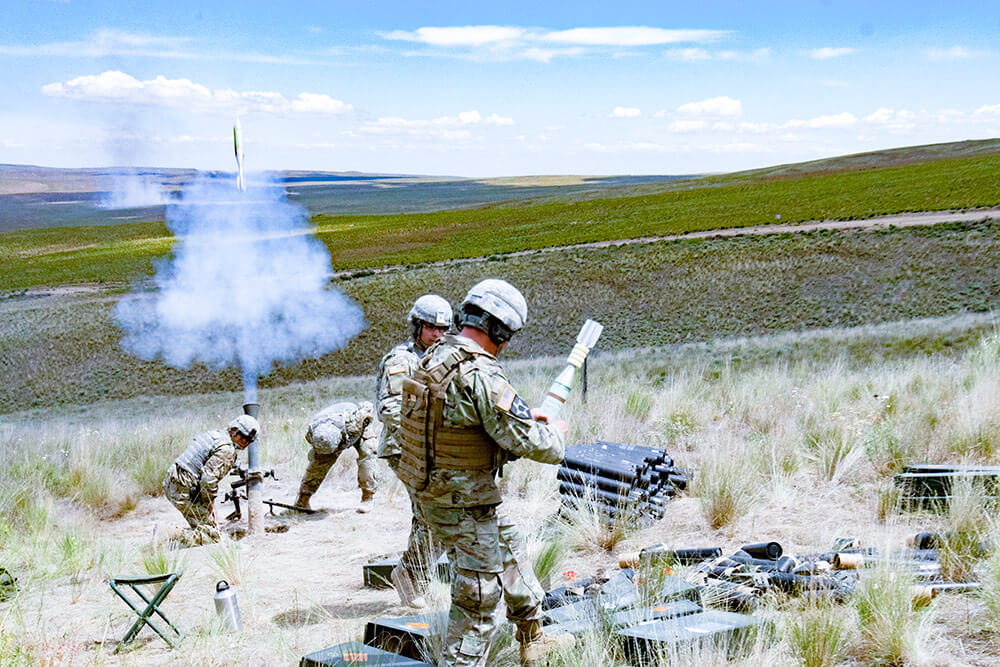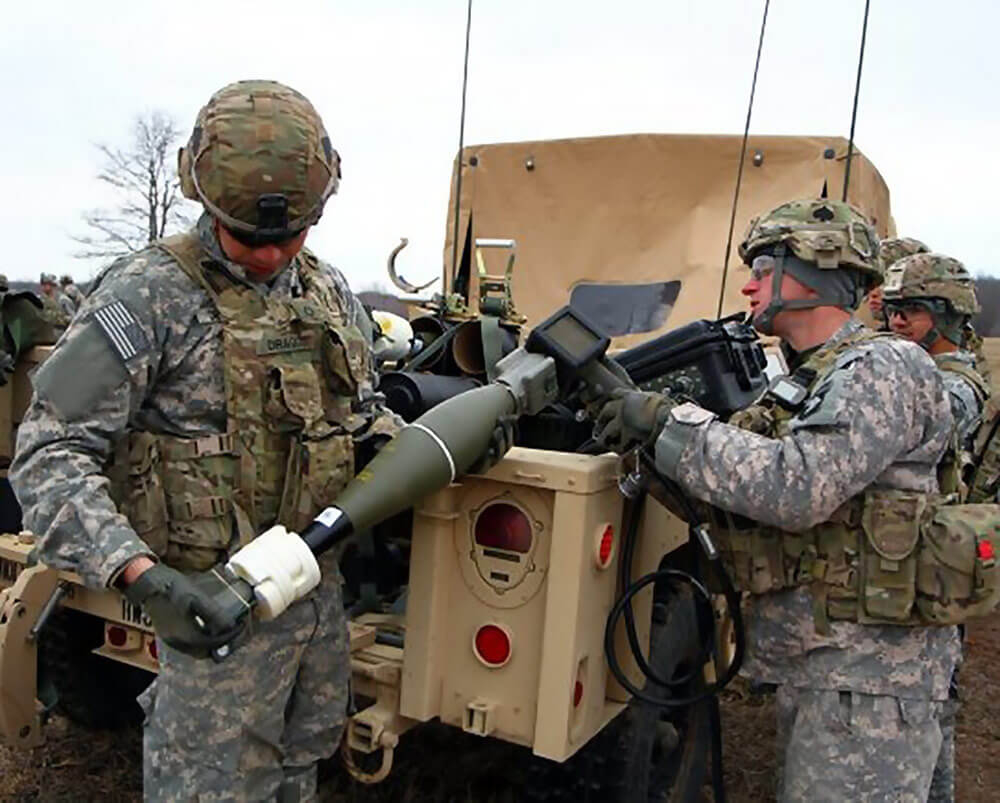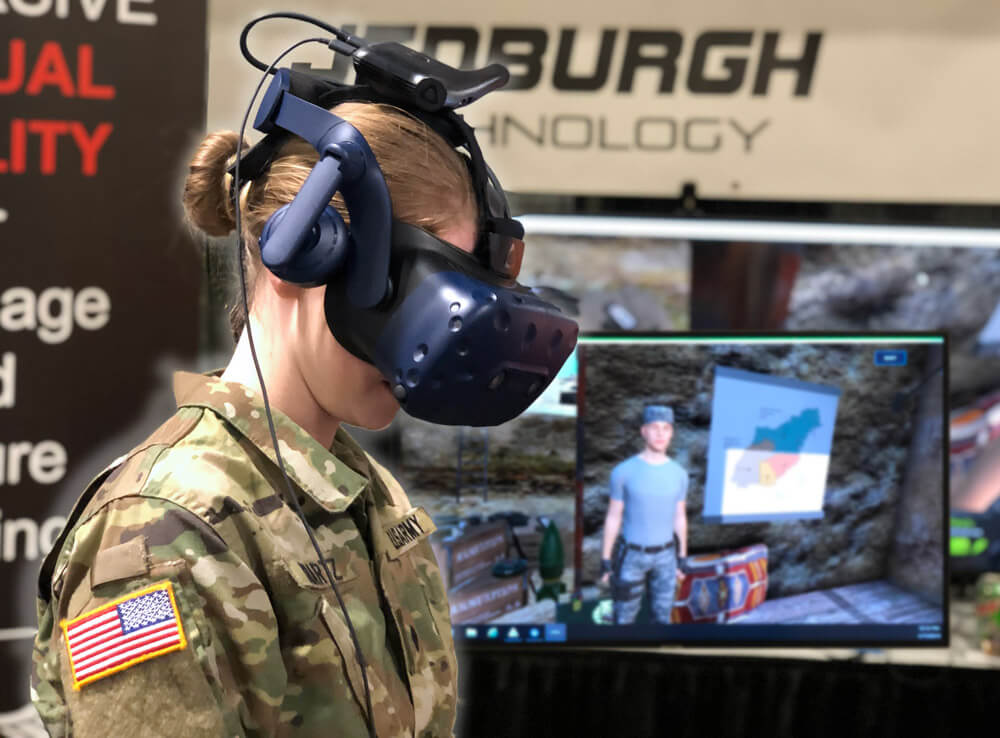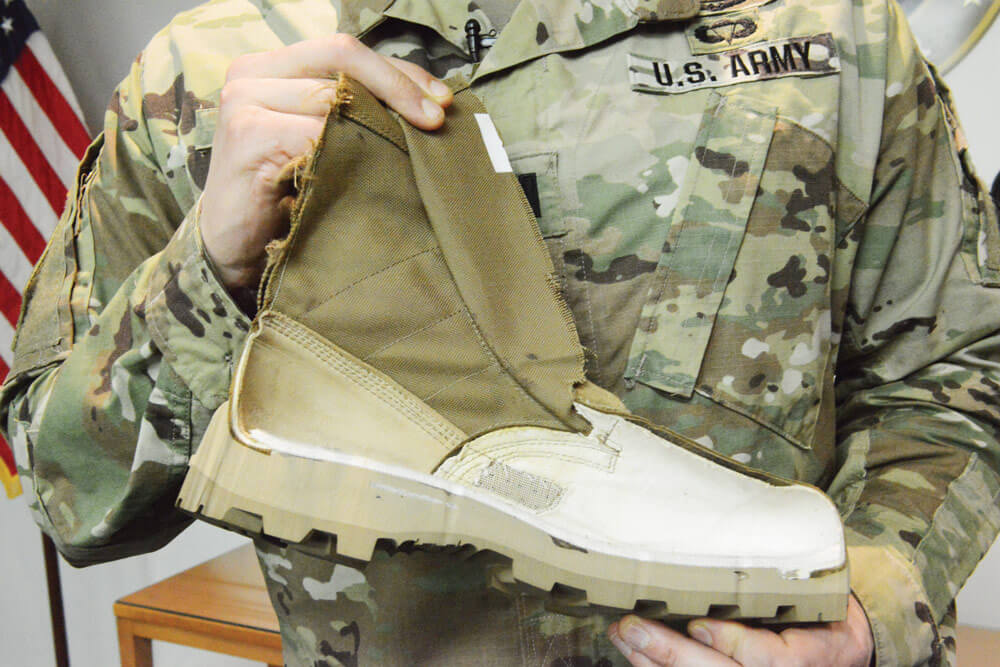New Laser-Guided, Precision Mortar
The next generation of mortar rounds is on the way to U.S. Army Soldiers. New laser-guided “smart” mortars will allow Soldiers to fire rounds on target with extreme precision. These new mortar rounds are designed to be faster, more accurate and maneuverable. They may even have the ability to track a target’s movements and engage at a position other than the one initially fired upon.

The 120mm high explosive guided mortar, or HEGM program is intended to replace the current precision-guided HE mortar – the accelerated precision mortar initiative (APMI).
The Army sought feasible designs from the private sector to create state-of-the-art technology that will outpace the APMI round. The biggest difference – the laser guidance system replacing the Global Positioning System (GPS) used in the APMI version.
“The APMI solution was a tremendous asset for our Soldiers in Afghanistan,” explained LTC Anthony Gibbs, product manager, guided precision munitions and mortar systems for Program Executive Office (PEO) Ammunition at Picatinny Arsenal, New Jersey. “It filled the urgent need for a responsive precision mortar at widely dispersed combat outposts and is available for our global response force today. We are improving upon the existing technology and [incorporating] next-generation upgrades into HEGM, such as increased threat countermeasures and enhanced maneuverability.”
The new mortar rounds aim to eliminate logistical issues that have created drawbacks for current mortar use in modern warfare.

Conventional mortars typically require mortarmen to fire multiple rounds as they adjust their aim to hit the target. New precision mortars would allow Soldiers to hit the target on the first round. Such technology would be most beneficial when fighting in urban environments with dense building configurations and high populations.
“Precision allows mortars to be used in areas where typically, collateral damage concerns would prevent them from being used, so it keeps the asset in the fight,” LTC Gibbs explained.
When collateral damage risks prohibit the use of mortar fire, infantry troops may be sent on foot to engage opponents with direct-fire weapons. The new technology reduces, to an extent, the need for direct-fire engagement in certain situations.
“With precision mortar capability, you’re able to quickly come in, establish fire and with one round [achieve] effects,” LTC Gibbs said. “If counter fire is a threat, a precision mortar gives Soldiers the ability to get first round effects and then reposition.”
HEGM offers additional benefits to Soldiers, such as the reduced logistical burden of having fewer rounds to bring to the fight.
“Instead of Soldiers having to fire two or three rounds to get effects, we can achieve effects with one,” said MAJ Kenneth Fowler, HEGM assistant product manager. “This reduces required logistical support, which means less fatigue for Soldiers over time, and you can engage a wider array of targets.”
Like its APMI predecessor, HEGM will be an all-terrain, all-weather mortar capable of incapacitating enemy troops that are standing in the open or located within or behind structural barriers or light-skinned vehicles – all while minimizing collateral damage. It will be compatible with all U.S. 120mm mortar weapons and fire-control systems used in infantry, armored and Stryker brigade combat teams.

However, the HEGM will be more accurate and maneuverable than APMI. The APMI cartridge has a requirement of a 10-meter CEP (circular error probable), meaning that if a circle with a 10-meter radius was drawn around a target, the round would fall inside the circle 50 percent of the time. The HEGM program goal is a less than 1-meter CEP. Such precision is possible due to the laser guidance system that aims the mortar round, rather than using a GPS-based location to obtain the target.
The laser guidance system, specifically the semi-active laser or SAL, is an independent targeting mode that uses laser designation to guide the mortar via a laser beam that locks onto the target. This means the round is aimed at an object rather than a location, which also means the mortar will have the potential to adjust course in mid-flight.
“Increased maneuverability will allow Soldiers to engage targets that may have moved or repositioned since the time the call for fire occurred,” LTC Gibbs said. “If the target has moved, [the mortar] can still hit it if the laser has designated it.”
The use of laser guidance also eliminates inaccuracies and vulnerabilities caused when GPS signals are compromised or degraded.
The Army awarded multiple contracts to private sector groups for preliminary designs of the HEGM. A final solution will be selected this year at the conclusion of a full competition for the winning design.
The HEGM program also employs expertise from the U.S. Army Armament Research, Development and Engineering Center at Picatinny Arsenal and PEO Soldier, Project Manager Soldier Sensors and Lasers, at Fort Belvoir, Virginia. While HEGM is still in the preliminary design stage, the program managers expect production to begin in fiscal year 2021.
By Staff Writer Keegan Rammel


